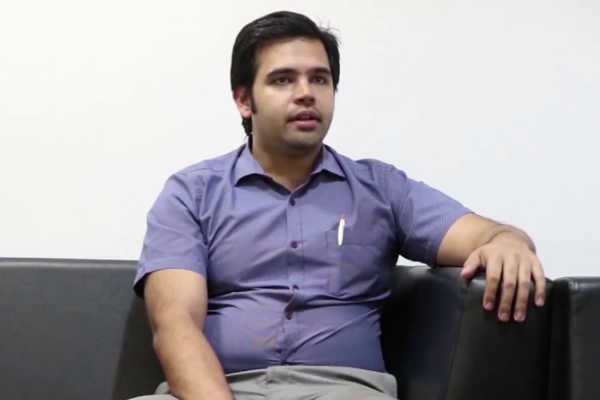Dr Jagdish Chaturvedi, Director, Clinical Innovations and Partnerships at Innaccel Acceleration Services Private, talks about the need to develop technologies by doctors that will help treat patients better
There is one doctor for 1700 people in India. There is probably one specialist for 20,000 people. With a rising burden of patients in the country with lack of effective treatment and management of diseases, there are decreasing number of doctors as they choose to explore careers abroad and spend many years training to be specialists. In a scenario such as this, where is the medtech community focussing its research and development today?
It is pretty obvious that the main lacuna in the healthcare system today is the inability to provide quality treatment and care for a significant proportion of patients. Most of the times the reasons are due to poor infrastructure, resources and lack of high quality technology that can improve the quality of therapeutic care for patients. Doctors, primarily understand treatment of diseases and should be on the forefront of developing technologies that help treat better. Unfortunately the overburdened and underpaid clinician in India does not have the time or training to help in developing these technologies.
The engineer’s/designers who take up entrepreneurship lack knowledge and understanding of the therapeutic domain. They therefore consciously choose to invent in the supportive healthcare domain which is largely patient information sharing between doctors and patients or remote monitoring solutions or point of care devices. These devices or technologies do help keep the doctor informed about the status of his/her patient but there is only so much a clinician can do when the therapeutic options are often outdated and ineffective. This may be a possible explanation of why 90 per cent of the entrepreneurs in India choose to develop non-therapeutic technologies.
There is no one to blame here because these entrepreneurs are doing what they can do, but is that what our healthcare system needs? There are two core assumptions driving entrepreneurs to develop non-therapeutic solutions:
- The first assumption here is that if a patient is brought to a doctor sooner (such as through monitoring ECG signals or other parameters) there will be better treatment. This may be true if the treatment delivery mechanisms are robust and the gap is only getting patients to doctors in time. Most of the time that’s not the case. Patients get inadequate treatment despite reaching on time or even earlier.
- Second, preventive devices will be adopted once awareness grows in the population. Even though this sounds very logical, has this translated in real life? Lets take the common example of smoking and tobacco chewing. India is one of the leading consumers of tobacco when almost everyone knows that tobacco chewing and smoking leads to oral and lung cancer. Does the awareness translate to a preventive action? Perhaps in very few situations. In most cases it is the “It wont happen to me” mindset that keeps most people to continue to maintain their high-risk behaviour. The same individual, when develops cancer, is very motivated in getting him/her cured from the illness. So, the desire to be cured from an illness is much higher than a desire to not acquire an illness, which they may or may not acquire. India has a glaringly enormous burden of patients who require cure and are not getting them effectively.
It is difficult to predict when someone can be affected by something that they could have prevented. Therefore the baseline belief is almost always “ I am in control. This will not happen to me”. This is why we see road accidents with people on two wheelers without wearing helmets. In many cases they are holding the helmets in their hands or are latched onto their bikes but they wont wear them.
Lets take another example. Almost every one suffers from a common cold at one point or the other and many suffer from it many times. Do we really take ample protective mechanisms to prevent a cold? We don’t. Because it can be treated easily and hence not too much effort in prevention.
I personally believe as an ear, nose and throat surgeon, and a serial medtech entrepreneur, that preventive technologies have a huge role in conditions that have no cure or lead to severe morbidity. For example, Entraview, which I developed independently, is a low-cost portable ENT endoscopy device sublicensed out to Medtronic in 2014. The device has been used by health workers to screen ear diseases in over 300,000 patients in rural parts of India so far.
The second example is Thorashield, developed as part of the Stanford India Biodesign programme, a safer pleural tapping device licensed out to Mecmaan Healthcare in 2013. This has been in the market to remove pleural fluid from patients with tuberculosis of the lungs since early 2016. And the third example i can cite is Sinucare, developed with InnAccel, is a low cost and easy to use balloon sinuplasty system commercialised in April 2017. It is now the simplest way to treat chronic rhinosinusitis (1 in 8 Indians have CRS as per NIAID) in India. So far 200+ ENT specialists from across the country have been trained and certified in the new procedure.
Such inventions are relevant in patients who already have a disease and prevention is necessary for certain complications, such as in diabetes and hypertension etc. For most other circumstances I strongly believe we need to target developing solutions that offer more effective treatment and cure for patients from diseases and morbid medical conditions. Hope this will help entrepreneurs figure out a way to identify key gaps in therapeutic areas and focus on developing technologies that are more curative in nature to reduce the burden of diseases in India.
- Advertisement -



Comments are closed.